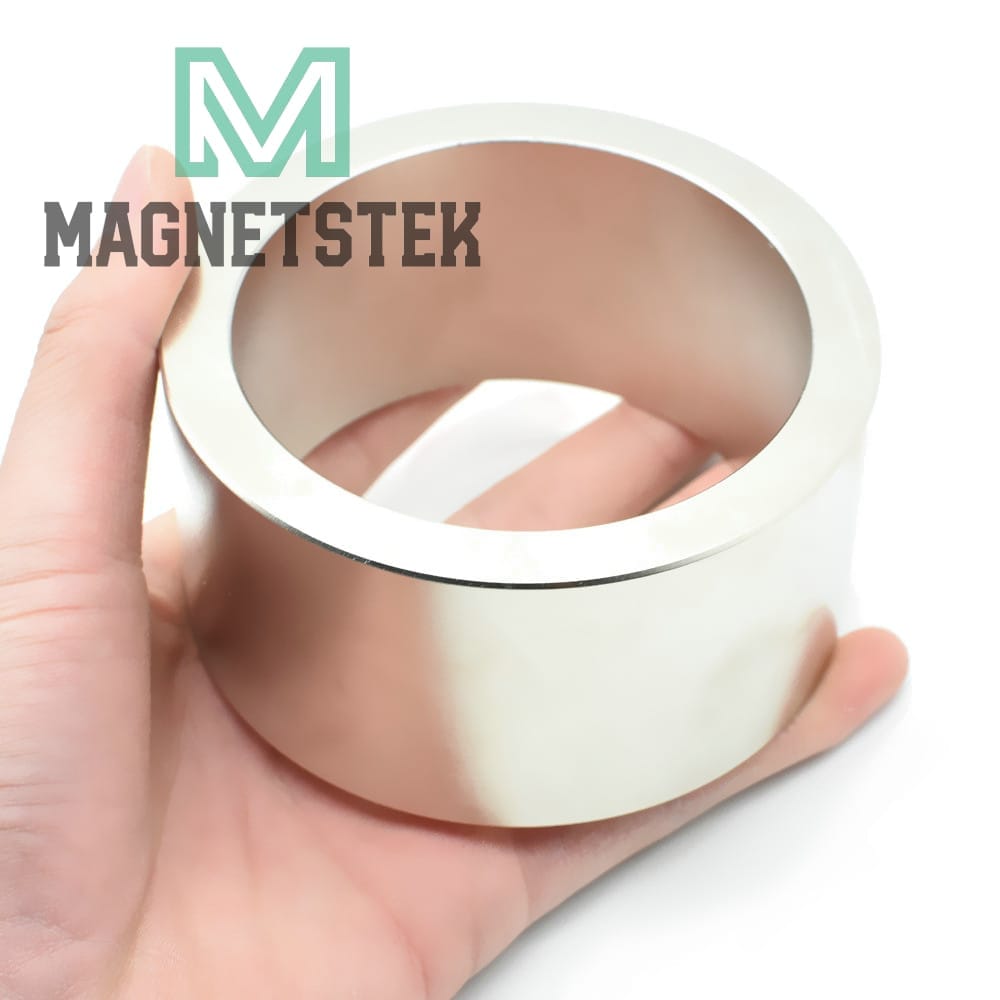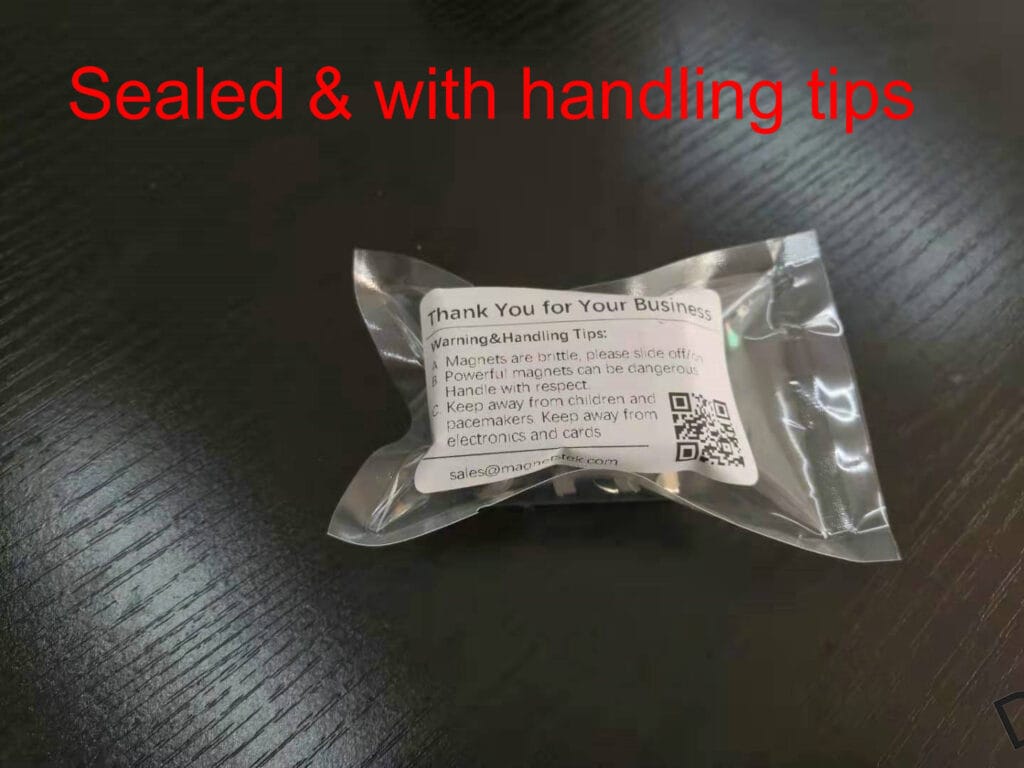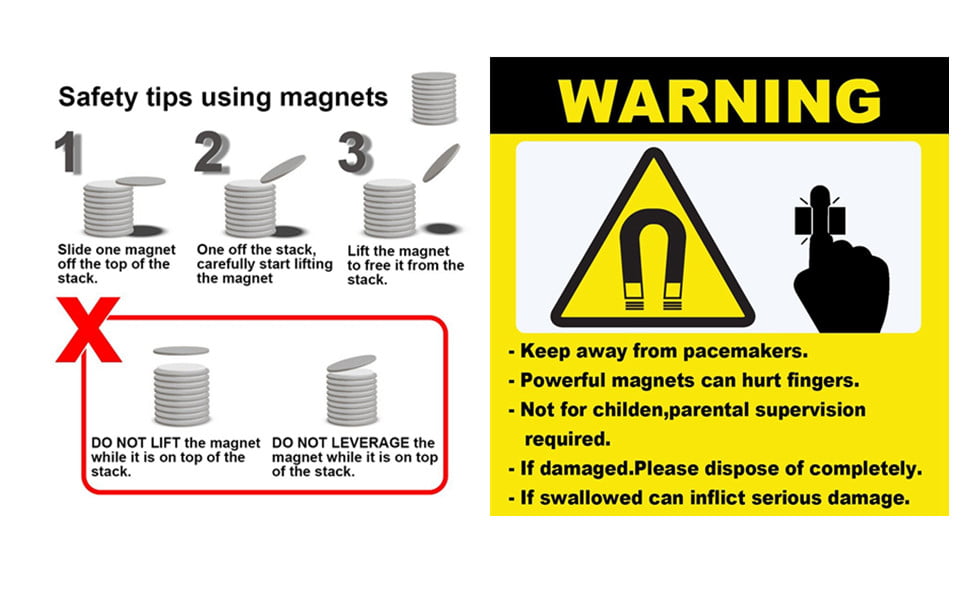Related: Magnet Handling Safety Tips

Introduction: Why Magnet Safety is a Big Deal
Have you ever tried to separate two powerful magnets, only to find them nearly impossible to pull apart? Or worse—had your fingers caught between them? If you work with strong magnets like Neodymium (NdFeB) or Samarium Cobalt (SmCo), you know they’re not just regular Fridge Magnets. These magnets have an intense force that can cause injuries or damage if not handled correctly.
That’s why using the right safety gear, tools, and techniques is essential. Whether you’re handling, separating, or storing strong magnets, a few precautions can make a huge difference. Let’s dive into the best ways to handle these powerful materials safely.

Why Safety Matters When Handling Strong Magnets
Super-strong magnets are widely used in industries like manufacturing, medical devices, and research. However, their power comes with risks, including:
✅ Pinched fingers or hands – If two magnets snap together unexpectedly, they can trap your fingers in between.
✅ Chipped or shattered magnets – High-force collisions can cause magnets to crack, creating sharp fragments.
✅ Magnetized debris attraction – Small metal particles can get pulled toward the magnet, creating hazards.
Without the right handling techniques and protective gear, dealing with these magnets can lead to injuries or product damage. That’s why using safety gloves, handling tools, and proper separation methods is crucial.
Best Safety Gloves for Handling Strong Magnets
Your hands are the most vulnerable part of your body when handling strong magnets. That’s why the right safety gloves are a must. Here are the best options:
🛡 Cut-resistant gloves – These protect against pinches and cuts when magnets suddenly snap together. Look for gloves made with Kevlar or Dyneema for maximum protection.
🛡 Nitrile gloves – If you’re handling coated magnets or working with adhesives (like 3M-backed magnets), nitrile gloves help keep oils and dirt from affecting adhesion.
⚠ Avoid bulky gloves – Thick gloves may reduce dexterity, making it harder to handle small magnets precisely. Instead, opt for flexible, cut-resistant gloves that balance protection and control.

Essential Tools for Handling Strong Magnets Safely
Along with gloves, using the right tools can help prevent injuries and damage. Here are some of the best tools for safe magnet handling:
🔧 Plastic or wooden spacers – These are placed between stacked magnets to keep them separated and easier to handle.
🔧 Rubber-coated pliers – When adjusting or positioning magnets, rubber-coated pliers help prevent accidental snapping.
🔧 Magnetic lifters – For larger industrial magnets, lifters provide a safe, hands-free way to move them.
🔧 Soft padding or cloth – Placing magnets on a cushioned surface prevents breakage if they accidentally snap together.
Using these tools ensures you’re handling powerful magnets in a way that’s both safe and efficient.
How to Separate Strong Magnets Easily

One of the biggest challenges with strong magnets is pulling them apart once they attract each other. Instead of struggling (or risking injury), use these techniques:
✅ The Sliding Technique
The best way to separate two magnets is to slide them apart rather than pulling them directly. This method reduces resistance and minimizes the risk of sudden snapping.
✅ Using Wedges or Spacers
Thin materials like plastic sheets, cardboard, or Teflon spacers can be placed between magnets to help separate them more easily.
✅ Lever Tools or Magnet Separators
For larger magnets, using a magnet separator tool or a simple wooden lever gives you extra force and control without direct hand contact.
✅ Twisting Motion for Cylindrical Magnets
If you’re working with cylindrical magnets, twisting them in opposite directions while applying pressure makes separation easier.
Additional Tips for Safe Magnet Storage
Proper storage is just as important as safe handling. Here’s how to store magnets safely:
📌 Use plastic or foam separators – Prevent magnets from snapping together by keeping a non-magnetic barrier between them.
📌 Keep magnets away from electronics – Strong magnetic fields can damage hard drives, credit cards, and other sensitive devices.
📌 Label high-strength magnets – Mark storage areas with warning labels to avoid accidental exposure.
📌 Store in a padded box or case – Protect fragile magnets from chipping by storing them in cushioned containers.
Conclusion: Handle Magnets Like a Pro
Strong magnets are powerful tools, but they require careful handling to prevent injuries and damage. By using cut-resistant gloves, proper tools, and smart separation techniques, you can ensure both safety and efficiency.
If you need custom magnets, magnetic assemblies, or expert advice, MagnetsTek has you covered! We specialize in high-quality NdFeB, SmCo, AlNiCo, and ferrite magnets, tailored to your exact needs. Contact us today for fast production and competitive pricing!
📩 Email us at: [email protected]
💡 Looking for a specific magnet? Browse our products at www.magnetstek.com.
Stay safe and keep your magnets under control! 🧲💪


